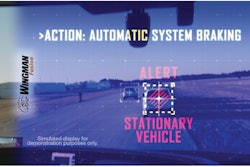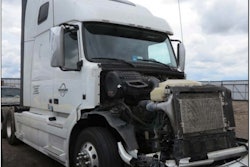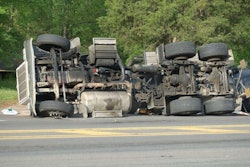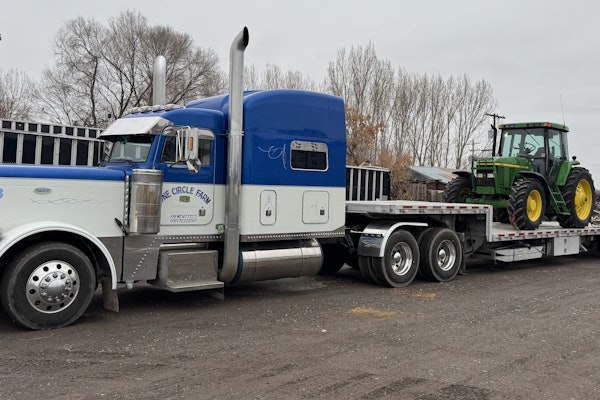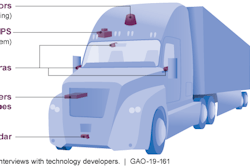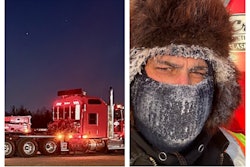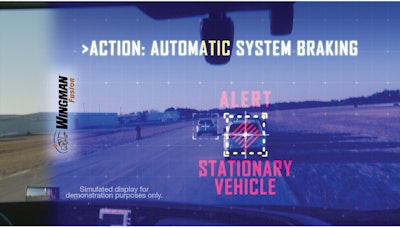 Collision avoidance systems were among NTSB’s most wanted improvements to transportation in 2017-2018.
Collision avoidance systems were among NTSB’s most wanted improvements to transportation in 2017-2018.Mandates for collision avoidance systems and video recorders were among the National Transportation Safety Board’s 10 “most wanted” transportation safety improvements that could have an impact on truckers and the trucking industry. Seven of the 10 items on the list were trucking related.
NTSB’s annual Most Wanted List, released this week, outlines the top 10 improvements the government agency would like to see in the coming two years. The NTSB, however, has no regulatory power. Its job is to recommend to regulators ways to prevent crashes and deadly accidents in all modes of transportation. This year’s list moves to a two-year cycle instead of the annual cycle for the report, NTSB says, to allow more time for changes to be made to address the issues on the list.
In addition to expanding use of collision avoidance technologies and event recorders, other recommendations on the list target ending alcohol and drug impairment, distracted driving and seat belt use.
NTSB recommends the DOT develop performance standards for collision avoidance systems and encourage fleets and truck drivers to install these technologies before regulations are made.
At a minimum, NTSB recommends forward collision warning systems be installed in trucks. Autonomous emergency braking and lane departure warning systems are also technologies NTSB says will help reduce crashes.
 Driver- and road-facing event recorders were among NTSB’s most wanted safety improvements for 2017-2018.
Driver- and road-facing event recorders were among NTSB’s most wanted safety improvements for 2017-2018.Additionally, the agency says event video recorders – both driver- and road-facing – can capture critical information about the vehicle and the occupants for the seconds leading up to, during and after a crash, as well as whether the brakes were applied, the speed of the vehicle and more.

Because of the benefits event recorders can provide for investigators after a crash, NTSB recommends regulators require their use and mandate that companies use the data in their safety management programs.
The agency encourages NHTSA to develop standards and require the use of video recorders in heavy-duty vehicles and also encourages FMCSA to require all heavy-duty vehicles be equipped with video event recorders.
NTSB says drug and alcohol use continues to contribute to transportation fatalities. Marijuana decriminalization, synthetic drug use and a rise in over-the-counter drug abuse compound the problem, the Board says.
NTSB recommends regulators pass and enforce laws to educate drivers on alcohol and drug use.
Other items on NTSB’s most wanted list include:
Reducing trucker fatigue
To address the problem of fatigue in transportation, NTSB wants “a comprehensive approach that focuses on research, education and training, technology, treatment of sleep disorders, hours-of-service regulations, and on- and off-duty scheduling policies and practices.”
The Board applauded the DOT’s electronic logging device mandate as a step toward reducing fatigued driving.
Requiring medical fitness
The agency recommends a comprehensive medical certification system for drivers that includes a driver’s complete medical history; procedures to identify applicants at high risk for sleep disorders; identification of specific conditions, treatments and medications that initially disqualify applicants for duty; certificates that are good for only a limited time; examiners who are licensed to perform exams and prescribe medications and more. A full list of medical recommendations can be seen here.
Eliminating distractions
In order to combat distracted driving, NTSB is urging all states to expand and strengthen distracted driving laws. Four states – Arizona, Texas, Montana and Missouri – don’t have anti-texting laws yet, and only 14 states and the District of Columbia ban handheld devices while driving.
Strengthening occupant protection
More than half of the people killed on American highways last year were unrestrained, NTSB says, even though seat belts and other restraints have been required in most states for more than 20 years. To combat this problem, the Board says strong occupant restraint laws are critical. Additionally, NTSB calls for better enforcement of the laws in places, as well as education campaigns about the benefits of seat belt use.

